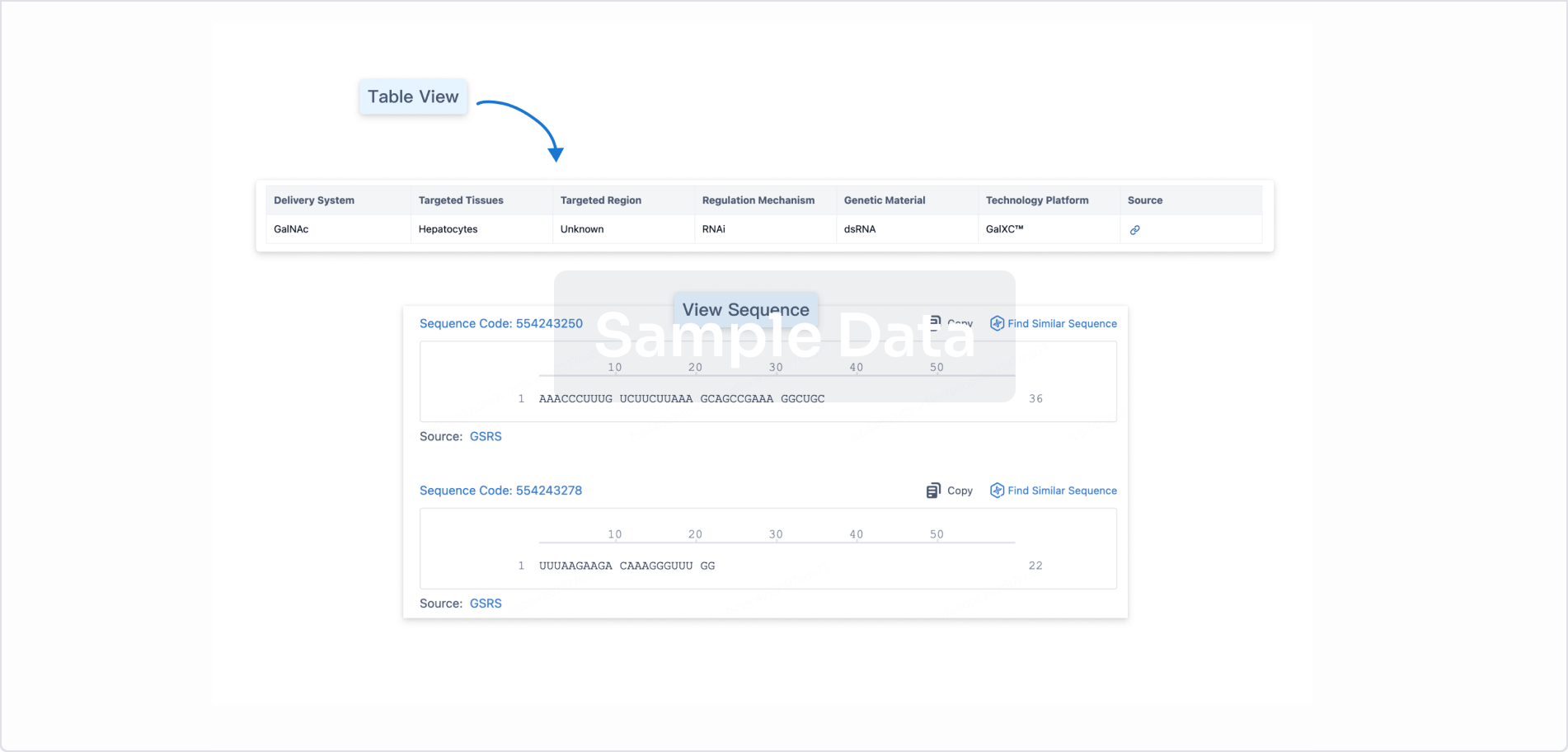Request Demo
Last update 10 Nov 2025
ASC-06
Last update 10 Nov 2025
Overview
Basic Info
Drug Type siRNA |
Synonyms ALN VSP, ALN-VSP, ALN-VSP01 + [1] |
Target |
Action inhibitors |
Mechanism KIF11 inhibitors(Kinesin-like protein 1 inhibitors), VEGF-A inhibitors(Vascular endothelial growth factor A inhibitors) |
Therapeutic Areas |
Active Indication |
Inactive Indication |
Originator Organization |
Active Organization |
Inactive Organization |
License Organization |
Drug Highest PhasePreclinical |
First Approval Date- |
Regulation- |
Login to view timeline
Structure/Sequence
Boost your research with our RNA technology data.
login
or

Sequence Code 29402701Sense strand

Target: *****
Sequence Code 29830281Antisense strand

Target: *****
Sequence Code 29830285Sense strand

Target: *****
Sequence Code 254615900Antisense strand

Target: *****
R&D Status
10 top R&D records. to view more data
Login
| Indication | Highest Phase | Country/Location | Organization | Date |
|---|---|---|---|---|
| Solid tumor | Phase 1 | United States | 01 Jul 2010 | |
| Advanced Malignant Solid Neoplasm | Phase 1 | United States | 01 Mar 2009 | |
| Advanced Malignant Solid Neoplasm | Phase 1 | Spain | 01 Mar 2009 | |
| Liver Cancer | Phase 1 | - | - |
Login to view more data
Clinical Result
Clinical Result
Translational Medicine
Boost your research with our translational medicine data.
login
or

Deal
Boost your decision using our deal data.
login
or

Core Patent
Boost your research with our Core Patent data.
login
or

Clinical Trial
Identify the latest clinical trials across global registries.
login
or

Approval
Accelerate your research with the latest regulatory approval information.
login
or

Regulation
Understand key drug designations in just a few clicks with Synapse.
login
or

AI Agents Built for Biopharma Breakthroughs
Accelerate discovery. Empower decisions. Transform outcomes.
Get started for free today!
Accelerate Strategic R&D decision making with Synapse, PatSnap’s AI-powered Connected Innovation Intelligence Platform Built for Life Sciences Professionals.
Start your data trial now!
Synapse data is also accessible to external entities via APIs or data packages. Empower better decisions with the latest in pharmaceutical intelligence.
Bio
Bio Sequences Search & Analysis
Sign up for free
Chemical
Chemical Structures Search & Analysis
Sign up for free



